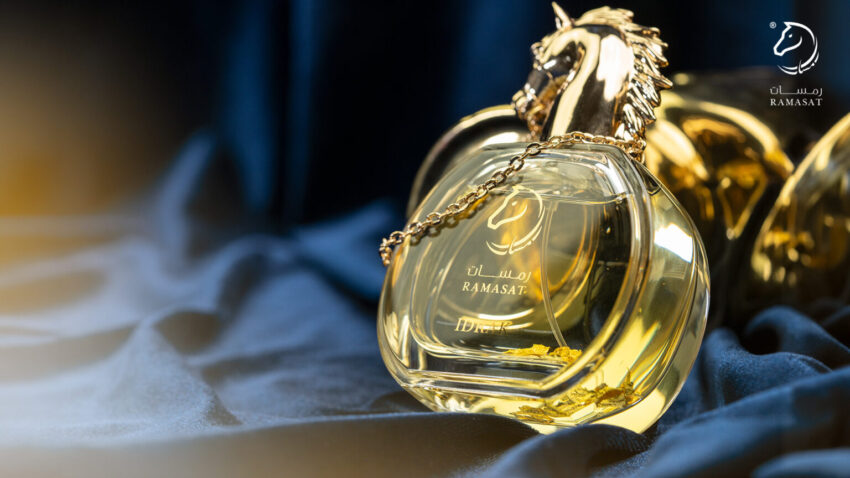In a world where aromas can transport us to different times and places, Arabic perfumes stand out as a fragrant gateway to exotic realms. Oud, which is also referred to as agarwood, originates from the resinous core of agarwood trees. Across numerous cultures, it has held a cherished status for centuries due to its enchanting scent and valuable therapeutic attributes. In this article, we delve into the fascinating world of Arabic perfumes and explore how they have the incredible power to elevate your mood.
The Allure of Arabic Perfumes
Arabic smells, which are also known as “attars,” have their roots in Middle Eastern and Arabian cultures. These fragrances are a treasure trove of tradition and sophistication since perfumery is a craft that has been developed and handed down through the years.
1. Rich History
Arabic fragrances have a long, illustrious history. In the Arab world, creating perfume has long been a significant aspect of the culture and is frequently connected to monarchy, trade routes, and ancestors’ ceremonies.
2. Natural Ingredients
One of the things that makes Arabic perfumes unique is the use of natural ingredients. These perfumes are usually formulated using a variety of organic materials, including flowers, spices, woods, and resins. Due to the concentration of natural ingredients, the smells become richer and more complex.
3. Unique Blending Techniques
The blending techniques employed in crafting Arabic perfumes are highly specialized. To create harmonious and enduring aromas, perfumers have perfected the technique of mixing different components. As a result, the scent changes with time, exposing various layers of aroma.
4. Distinctive Scents
Arabic perfumes offer an array of distinctive scents that cater to different preferences. From sweet and floral to woody and spicy, there’s a fragrance to suit every mood and occasion.
The Art of Crafting Arabic Perfumes
The creation of Arabic perfumes is an intricate process that requires skill and knowledge. Perfumers, often referred to as “attar wallahs,” follow a meticulous approach to ensure the finest quality fragrances. Here’s an overview of the perfume-making process:
1. Sourcing Ingredients
The journey begins with the selection of high-quality natural ingredients. Flowers like roses and jasmine, spices such as saffron and cardamom, and precious woods like oud are carefully sourced.
2. Distillation
The essential oils are extracted from these ingredients through various methods, with steam distillation being one of the most common. This process captures the essence of the raw materials.
3. Blending
Blending is where the magic happens. Perfumers combine different essential oils to create unique fragrances. The proportions and sequences of adding these oils are closely guarded secrets, passed down through generations.
4. Aging
Once the blend is created, it is left to age. This aging process allows the different scent components to meld and mature, resulting in a more refined and balanced fragrance.
5. Bottling
Finally, the perfume is carefully bottled in ornate containers. Arabic perfumes are often presented in beautiful glass bottles, reflecting the rich heritage of these fragrances.
The Impact on Mood and Well-Being
Arabic fragrances can affect your emotions and general well-being in addition to providing a pleasant scent. They can improve your life in the following ways:
1. Stress Relief
Some Arabic scents, such as those with oud or sandalwood, are renowned for their relaxing and stress-relieving effects. These scents can encourage relaxation and aid in reducing anxiety when inhaled.
2. Confidence Booster
Wearing a fragrance you love can boost your confidence. Arabic perfumes, with their unique and captivating scents, can make you feel more self-assured and ready to take on the day.
3. Connection to Tradition
Using Arabic perfumes can connect you to a rich cultural heritage. This sense of tradition and history can provide a feeling of grounding and belonging.
4. Positive Associations
A well-loved fragrance can create positive associations in your mind. When you wear an Arabic perfume and receive compliments or experience special moments while wearing it, you create joyful memories associated with that scent.
5. Aromatherapy Benefits
The natural ingredients in Arabic perfumes offer aromatherapy benefits. Certain scents can uplift your mood, boost energy levels, or even improve focus and concentration.
Incorporating Arabic Perfumes into Daily Life
To fully enjoy the mood-enhancing and well-being benefits of Arabic perfumes, consider incorporating them into your daily life:
1. Personal Fragrance
Wearing Arabic perfumes as your personal fragrance is the most direct way to experience their effects. Choose scents that resonate with your mood and the occasion.
2. Scented Baths
Add a few drops of your favorite Arabic perfume to your bath for a luxurious and relaxing soak. The steam will release the fragrance, creating a soothing atmosphere.
3. Home Fragrance
You can also use Arabic perfumes to create a pleasant atmosphere in your home. Place a few drops in an oil diffuser or mix them with water to create a fragrant spray for your living space.
4. Perfumed Accessories
Infuse your accessories with delightful scents. You can add a drop of your chosen fragrance to a piece of fabric or a sachet and keep it in your wardrobe, drawers, or handbag.
5. Gifting
Arabic perfumes make excellent gifts. Share the experience of well-being and mood enhancement with loved ones by gifting them a beautifully crafted Arabic perfume.
Conclusion:
In conclusion, Arabic perfumes are more than just scents; they are a bridge to culture, tradition, and well-being. They make a lovely complement to daily life because of the special combinations of natural components they use and the care with which they are made. As a result, you should think about examining the world of Arabic perfumes the next time you want to improve your mood, lessen tension, or just enjoy the pleasure of a well-crafted aroma. These smells have the ability to take you to another era and location, energizing and enlarging your spirituality in the process.


